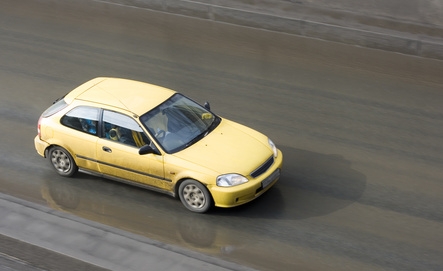
Some rear-drive vehicles and most of the front-drive vehicles have struts, a major structural suspension part, according to the Monroe Shocks & Struts website. In conventional suspensions the strut replaces the upper ball joint and control arm.
The strut housing, a damping unit, a piston rod, a jounce (compression) bumper and a coil spring are all parts of the whole strut, according to monroe.com. The damping unit is located within the strut housing and withstands road shock and provides structural support due to the rigidity of the heavy gauge steel construction. A strut piston rod measures up to 7/8s of an inch, which is slightly larger than a typical shock absorber. The increased size withstands the side load on the strut shaft better. Located between the lower and upper spring seats the coil spring is held in place by tension. Also located under the upper spring seat is the jounce bumper, which serves the purpose of limiting suspension travel by keeping the components from hitting against each other. All these parts are held together by a large nut located at the strut rod end.
Struts serve multiple purposes because different components are integrated into one assembly, according to the Car Junky website. While the vehicle is moving, its spring supports the vehicle's weight to allow it to adapt to road irregularities. Also while traveling, the internal shock absorber dampens the spring movement as it rebounds and compresses. Struts affect vehicle control (steering, braking and wheel alignment) and riding comfort by providing structural support to the suspension, according to monroe.com.
Signs of worn struts will give you an indication that they need service or replacing; these signs include excessive bouncing, bottoming out, cupping wear on the tires, rocking back and forth and nose-diving or drifting while breaking. Generally, as a rule the coil springs replaced at the same time that the struts are changed or replaced.
A qualified service technician should inspect and check your vehicle's suspension system on a regular basis, according to Car Junky. The struts should be checked at least once a year usually at the same time the wheels are aligned. Wear on the strut carriage is gradual and incremental losses are not noticeably apparent in handling and control. A yearly inspection of the vehicle may catch problems before they become severe enough to require the costly replacement of the struts.
Struts perform similar internal functions to shock absorbers; however, struts provide structural support, are lighter in weight and take up less space than conventional suspension shock absorber systems. According to monroe.com, similarities include the position and action of the piston on the piston rod, the strut is also velocity sensitive and struts perform a damping function.